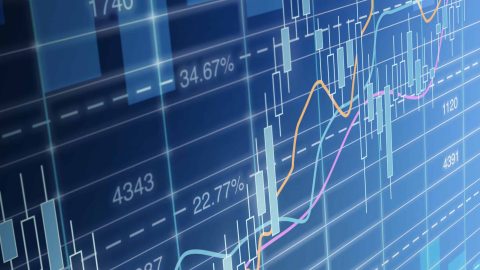The longest eleventh hour in recent history is drawing to a close. However, while the negotiations earlier this week seem to have narrowed the gap between Greece and its creditors, a final deal has not emerged yet.
How markets will react to Grexit in case a deal cannot be reached is mostly speculation, but at least we can assess how markets in the past few years were impacted by the ups and downs of Greece-related risk. For that purpose we calculated a simple risk indicator (GREEKRISK), by taking the spread of Greek 10Y sovereign yields over the average of comparable yields from Italy, Spain and Portugal. Thus, the general risk associated with peripheral Europe is (mostly) eliminated. The advantage of this approach over CDS spreads is that the latter show a much more hysterical trading pattern.
The chart below shows the history of GREEKRISK since 2009 and how it was affected by important political and economic events over this period:
| Legend: | ||
| a) Pasok wins elections | h) PM resignation | o) Issue of Greek 3bn Eurobond |
| b) First austerity package | i) Debt swap | p) Snap presidential elections |
| c) First bailout | j) Election undecided | q) ECB QE announcement |
| d) New austerity | k) New Democracy wins election | r) Syriza wins election |
| e) 2011 budget approved | l) Draghi speech “Whatever it takes” | s) Eurogroup loan extension for 4 months |
| f) Portugal bailout | m) New austerity package | t) Postponement of IMF payment |
| g) Second GR bailout | n) Democratic Left leaves government |
The first thing to note is that our risk indicator which started moving up last autumn is still way below its peak during the last crisis. We are still not in panic territory, although yields above 10% clearly suggest that investors are worried.
The second aspect worth pointing out is how short-lived many achievements turned out to be. Bailouts only resulted in short-term downward blips, while some of what appeared to be bigger successes at the time faded away within few weeks or months (like the debt swap in March 2012 or last year’s return to international bond markets). Therefore, even if the parties succeeded in reaching a deal this week, hopes are slim that risks would not return later in the year. Gideon Rachman was (hopefully) wrong when he stated in the FT: “The truth is that whatever decisions are made, all choices could lead to chaos”.
The connection between Greece-related risk and the Euro has been strong, at least since 2014, as the chart below shows:
Correlation and causation are two different animals, of course, and the EUR is certainly not only driven by developments in Greece. Still, the chart suggests a remarkably strong relationship. The correlation coefficient was -0.96 since the beginning of 2014. Somewhat surprisingly, in June the Euro strengthened from 1.093 to 1.135 vs the US dollar, whereas the Greek risk indicator rose by 11%. Whether this reflected currency traders’ belief that Grexit will not happen or the falling probability of a Fed rate hike before year-end remains unclear.
European equities obviously have suffered from the recent hike in Greece-related risks, as shown by the massive underperformance of the Euro Stoxx since April. Longer term, however, the link between European equities and developments is less pronounced and, occasionally, even the auspices of the relationship are are different from what one would expect. European equities started underperforming their EU peers in 2010 as the first signs of the Greek crisis emerged. When the situation stabilized in the second half of 2012, European stocks regained some of the lost ground. However, in 2013 their underperformance continued due to the emerging growth gap between the US and Europe – although risks in Greece improved.
In recent weeks, a lot of warnings have been issued concerning the potential fallout for CEE equities in case of a further deterioration of the Greek situation or even a Grexit. While the direct links between Eastern European economies and Greece are weak and mostly concentrated on Bulgaria and Romania, deteriorating investor sentiment and declining risk appetite could hurt the entire region. The fact that these warnings are not unfounded can be seen in the following chart which shows the relative performance of CEE to core European equities (inverted scale) vis-à-vis the Greek risk indicator:
The situation is still fluid, to say the least. However, we still believe Grexit will be avoided – mainly for political reasons. First, the political will to keep the Union and the Eurozone together is immense (and has been constantly underestimated by US-observers in particular). Also from a narrow economic angle, the exit of a member would be problematic, as it would raise doubts about the Eurozone’s durability.
Second, the fear of Greece moving into Russia’s geopolitical orbit is spooking European and, particularly, US diplomats. It is time “to recognize that this is now not about the numbers. It is about the high politics of Europe”, American economist Larry Summers wrote recently directed toward the IMF, but his plea applies to the other parties as well.
One things seems certain: Even if all parties take the right road – the ride will likely be long and bumpy.
Legal disclaimer
This document is an advertisement. Unless indicated otherwise, source: Erste Asset Management GmbH. The language of communication of the sales offices is German and the languages of communication of the Management Company also include English.
The prospectus for UCITS funds (including any amendments) is prepared and published in accordance with the provisions of the InvFG 2011 as amended. Information for Investors pursuant to § 21 AIFMG is prepared for the alternative investment funds (AIF) administered by Erste Asset Management GmbH pursuant to the provisions of the AIFMG in conjunction with the InvFG 2011.
The currently valid versions of the prospectus, the Information for Investors pursuant to § 21 AIFMG, and the key information document can be found on the website www.erste-am.com under “Mandatory publications” and can be obtained free of charge by interested investors at the offices of the Management Company and at the offices of the depositary bank. The exact date of the most recent publication of the prospectus, the languages in which the key information document is available, and any other locations where the documents can be obtained are indicated on the website www.erste-am.com. A summary of the investor rights is available in German and English on the website www.erste-am.com/investor-rights and can also be obtained from the Management Company.
The Management Company can decide to suspend the provisions it has taken for the sale of unit certificates in other countries in accordance with the regulatory requirements.
Note: You are about to purchase a product that may be difficult to understand. We recommend that you read the indicated fund documents before making an investment decision. In addition to the locations listed above, you can obtain these documents free of charge at the offices of the referring Sparkassen bank and the offices of Erste Bank der oesterreichischen Sparkassen AG. You can also access these documents electronically at www.erste-am.com.
N.B.: The performance scenarios listed in the key information document are based on a calculation method that is specified in an EU regulation. The future market development cannot be accurately predicted. The depicted performance scenarios merely present potential earnings, but are based on the earnings in the recent past. The actual earnings may be lower than indicated. Our analyses and conclusions are general in nature and do not take into account the individual characteristics of our investors in terms of earnings, taxation, experience and knowledge, investment objective, financial position, capacity for loss, and risk tolerance.
Please note: Past performance is not a reliable indicator of the future performance of a fund. Investments in securities entail risks in addition to the opportunities presented here. The value of units and their earnings can rise and fall. Changes in exchange rates can also have a positive or negative effect on the value of an investment. For this reason, you may receive less than your originally invested amount when you redeem your units. Persons who are interested in purchasing units in investment funds are advised to read the current fund prospectus(es) and the Information for Investors pursuant to § 21 AIFMG, especially the risk notices they contain, before making an investment decision. If the fund currency is different than the investor’s home currency, changes in the relevant exchange rate can positively or negatively influence the value of the investment and the amount of the costs associated with the fund in the home currency.
We are not permitted to directly or indirectly offer, sell, transfer, or deliver this financial product to natural or legal persons whose place of residence or domicile is located in a country where this is legally prohibited. In this case, we may not provide any product information, either.
Please consult the corresponding information in the fund prospectus and the Information for Investors pursuant to § 21 AIFMG for restrictions on the sale of the fund to American or Russian citizens.
It is expressly noted that this communication does not provide any investment recommendations, but only expresses our current market assessment. Thus, this communication is not a substitute for investment advice, does not take into account the legal regulations aimed at promoting the independence of financial analyses, and is not subject to a prohibition on trading following the distribution of financial analyses.
This document does not represent a sales activity of the Management Company and therefore may not be construed as an offer for the purchase or sale of financial or investment instruments.
Erste Asset Management GmbH is affiliated with the referring Sparkassen banks and Erste Bank.
Please also read the “Information about us and our securities services” published by your bank.
Subject to misprints and errors.







